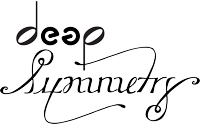Troubleshooting Network Problems
If Beat Link Trigger reports that it can’t find any DJ Link devices when you try to take it online, this means there is a problem with your network. People often ask for a connection diagram, but there is really nothing to diagram: as long as you have your players and the computer running BLT on the same LAN, it will work.
That could mean anything from plugging a single player directly into the LAN adapter of your computer (with a modern Ethernet adapter with Auto-MDI-X), to plugging everything into a fast hub, switch (which most things called “hubs” really are today), or router.
By far the most common problems involve configuration issues with the network adapter on the computer running Beat Link Trigger. So here is a list of things to think about and watch out for, from @brunchboy and @kevinnns.
If you are still stuck after following this advice, you can ask for help on the Gitter channel.
The best scenario is to have a completely separate switch for only your DJ gear, and a secondary network adapter on the computer running BLT. Connect all the DJ gear and that network adapter to that one switch. Make sure that switch isn’t connected to other switches/routers, this can make the Pro-DJ Link traffic go bananas.
If you still want to be able to access the Internet from the computer running Beat Link Trigger, you can do so by connecting its primary network adapter to another switch or router that is connected to the Internet. This way you can use the primary network adapter on your BLT computer to do anything that requires global connectivity, and the secondary adapter for BLT and the DJ Link network.
If your computer has only one network adapter, then it is best not to attempt Internet connectivity, and connect only to the DJ gear network while running shows.
The next major thing that needs to be correct for the players and Beat Link Trigger to be able to talk to each other is for them to have a shared understanding of what network they are on, and IP addresses and net masks that are mutually compatible.
Of course, you should check that the adapter is active at all, it might have been disabled at the OS level, or there may be a problem with the hardware or the cable.
In the simplest case there is no DHCP server on the DJ gear network, so the players will self-assign a Link-Local Address (further details in RFC-3927). This is an address of the form 169.254.x.y., and if you have left the network adapter settings at their default DHCP mode in macOS or Windows (and probably Linux), it will self-assign a compatible address in the same range. Windows calls this APIPA. You can verify this has happened by looking at the list of networks that Beat Link Trigger displays when it is reporting it can’t find DJ Link devices. If the network adapter is not using an address that is in this range, then you’ll need to fix its configuration.
-
If the adapter is configured to a hard-coded address, either change that address and net mask to match the Link-local network, or change it to use DHCP so that it will fall back to using link-local addressing when it finds no DHCP server.
-
If it is already configured to use DHCP, tell it to try to renew its lease. (In Windows,
ipconfig /releasefollowed byipconfig /renew. In macOS, here are Apple’s instructions and a nice osXdaily article. In Linux, you’ll generally want to usedhclient.)
If you want to have more control over the IP address assignments and network parameters of your DJ network, and are running your own DHCP server, you will already know most of this information and troubleshooting steps. But:
-
Make sure the DHCP server has plenty of time to boot, and was ready to respond before you power on the CDJs or attach the computer’s network adapter. Otherwise they may time out waiting for the server and self-assign IP addresses as described above.
-
Turning the CDJ off for a few seconds and then back on once you know the DHCP server is ready will give the player a chance to get the address you intended for it.
-
If the network adapter doesn’t show the correct address in Beat Link Trigger’s troubleshooting window, follow the instructions in the previous section for releasing and renewing your DHCP lease.
You need to be sure that there is no firewall or anti-virus software on the host computer blocking Beat Link Trigger from communicating on the network adapter. Either of those things can prevent it from joining the DJ Link network.
Because of fundamental limitations in the design of the DJ Link protocol, only one program can connect to the DJ Link network on a given network adapter. So it is impossible to run Beat Link Trigger on the same computer as rekordbox, or any other software that wants to communicate with the DJ Link network.
If you are running any software that happens to randomly use the same ports as the DJ Link protocol (one culprit in Windows turns out to be the AnyDesk remote desktop software) this will also prevent Beat Link Trigger (or rekordbox) from starting up properly. You will want to look for conflicts on ports 50000, 50001, and 50002 (and remember you need to check the UDP protocol, not just TCP).
- On macOS and Linux you can use, for example,
lsof -i :50000to see the process using port 50000. (You may need to installlsofusing your preferred package manager on Linux, it is preinstalled on macOS. Other Linux alternatives are described here.) - On Windows you can use the Resource Monitor GUI: Start menu → All Programs → Accessories → System Tools → Resource Monitor (or run
resmon.exe). Remember to look for both UDP and TCP listeners and connections.
